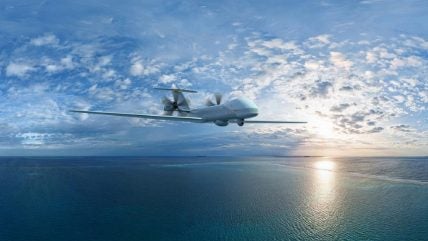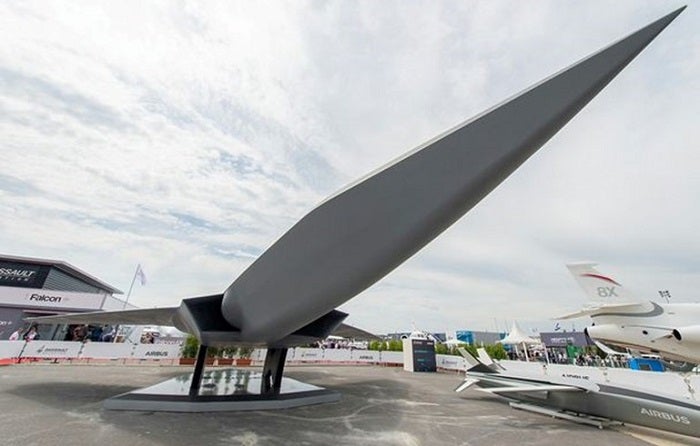
Representatives from participating nations in the manufacture of the future ‘Eurodrone’ gathered in Hallbergmoos, Bavaria in late February for their first board meeting since the project launched two years ago.
Hosted by the Organisation for Joint Armament Co-operation (abbreviated ‘OCCAR’ in French), the project manager overseeing platform development, stipulated the latest acheivements and progress in the development process.
The Czech, French, German, Italian and Spanish (and Japan as an observer state) consortium will engage with sovereign industry partners to deliver a uniquely European Medium Altitude, Long Endurance, Remotely Piloted Aircraft System (MALE RPAS).
Launched in 2016, the programme was followed by various design reviews, including a Definition Study that defined common requirements between France, Germany, Italy and Spain in 2018.
The subsequent two years were fully devoted to negotiating a global contract with Airbus Defence and Space GmbH as prime contractor, Airbus Defence and Space S.A.U, Leonardo and Dassault Aviation as major subcontractors. It covers the development, production and initial in-service support for 20 systems.
Since then, the partners completed successful preliminary and critical design reviews. Now, we can expect the manufacture of the first prototype to commence this year.
How well do you really know your competitors?
Access the most comprehensive Company Profiles on the market, powered by GlobalData. Save hours of research. Gain competitive edge.

Thank you!
Your download email will arrive shortly
Not ready to buy yet? Download a free sample
We are confident about the unique quality of our Company Profiles. However, we want you to make the most beneficial decision for your business, so we offer a free sample that you can download by submitting the below form
By GlobalDataNotably, OCCAR also stipulates that the Eurodrone will serve as an uncrewed collaborative combat aircraft (CCA) system within the trilateral Future Combat Air System (FCAS). This alternative programme will see France, Germany and Spain build a ‘system of systems’ with a sixth-generation fighter jet at the centre of a network-centric, hybrid force structure.

Eurodrone features
Due to be completed in 2027, and enter service for the first time in 2028, with initial operating capability in 2030, Eurodrone partners will contribute to a user ecosystem in which all participants pool resources for availability and sustainment purposes.
This timeline was set before the Covid-19 pandemic and remains unchanged since the contract validation in 2020. For that reason, it may be hard to differentiate between Covid knock-down production delays and other reasons such as poor co-ordination.
GlobalData Defence Analyst, Wilson Jones, explained that Eurodrone comprises “a dual engine MALE, which makes it very different from the US Reaper and Predator models, which are generally described as MALES.
“The two-engine design seems to have been very controversial during the development because it increases unit weight and costs. Germany is responsible for that design demand due to their plan to use it for urban missions, and the failure of a single engine would lead to a crash in a highly populated area. France, meanwhile, is planning for missions in Saharan Africa where low population density means this was not a concern, and they were very critical,” he added.
“More engines will mean more weight but more powerful thrust, and will likely mean the Eurodrone can carry more and heavier weapons, but at a drawback of operational range. However, since the maiden flight is now scheduled for 2025, we won’t know until then.”
National specification divergences
In January 2023, a smaller German subcontractor, Hensoldt, gained a €15m ($16.2m) contract from the German Federal Office for Bundeswehr Equipment, Information Technology and In-Service Support to develop sensor technology that can be integrated into a pod demonstrator to provide singal intelligence for the German Eurodrone configuration.
Hensoldt’s sensor technology, which can be used for reconnaissance of radio and radar signals, is based on several of the latest technologies, including digitisation, electronic beam steering and metallic 3D printing. This constitutes a highly specific configuration change that will diverge from other user systems.
This instance of divergence may not be the last. As Europe’s infamously efficient programme manager, OCCAR will need to prevent national specification changes amid the manufacturing phase.
Even though the programme has already met its critical design specifications several years ago, and is now due to begin building the prototype, participating member states may have new ideas for their systems in the past two years since the contract was formalised.
“This is the first time in history we are seeing large scale drone use in conflict by peer nations.”
GlobalData Defence Analyst, Wilson Jones.
Jones agreed that OCCAR will need to withstand pressure of design alterations: “I’d say almost certainly, although I would say the Ukraine conflict would be the more pertinent reason.
“This is the first time in history we are seeing large scale drone use in conflict by peer nations. The US drone campaign [in Afghanistan] was in circumstances of total air supremacy. Ukraine and Russia are both losing hundreds of drones of various types.”
Meanwhile, participating members will doubtless have learned their own lessons from the war in Eastern Europe.
“What those specs are, we can only speculate,” Jones noted. “But I would guess something to ensure survivability. Some kind of countermeasures to keep the Eurodrone flying if someone is trying to take it down? Maybe the second engine plays into that.”







